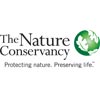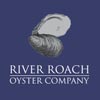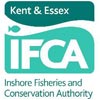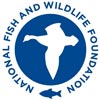ABOUT US
The Essex Native Oyster Restoration Initiative (ENORI) is a collaborate effort between oystermen, government, environmental NGOs and academia.
Together we are working towards the Essex estuaries having self-sustaining populations of native oysters that provide ecosystem services, sustainable fisheries and increased biodiversity whilst recognising their cultural importance.
This is the largest native oyster restoration project in Europe; together we will recover native oysters and native oyster beds in the 284km2 Blackwater, Roach, Crouch and Colne Marine Conservation Zone designated in 2013 for their importance.
ACHIEVEMENTS
WHY SHOULD WE PROTECT THE NATIVE OYSTER?
Native oysters (Ostrea edulis) are critically important both ecologically and economically.
As well as being an important part of our marine life, the native oyster provides us with many ecosystem services – these are the benefits we receive for free from the natural environment.
BIODIVERSITY
Oyster habitats support a higher biodiversity of invertebrates and fish than surrounding unstructured habitats. Recent research recorded 96 species living on or amongst our native oyster.
SUPPORTING FISH POPULATIONS
Oyster beds provide valuable nursery habitat for many fish species including those of conservation and/or commercial importance.
IMPROVING WATER QUALITY
Water quality is greatly improved by oysters filtering out suspended matter. This improves sunlight penetration to the seabed and benefits a range species including submerged aquatic vegetation.
REDUCING NITROGEN LEVELS
Estuaries tend to have very high levels of nitrates from agricultural run-off and waste water discharge leading to eutrophication. Oysters remove these excess nutrients from the water column.
HERITAGE VALUE
Native oyster fishing and cultivation have long been at the heart of coastal communities in Essex and can be traced back to Roman-times.
THE HISTORY OF OUR NATIVE OYSTER
Our native oyster has been with us for as long as we can see back in our human history.
Below is a timeline showing just how important native oysters have been to us and also some of the threats that they have faced over the years.
THREATS TO OYSTERS
Threats to oysters have mainly come around as a result of human actions.
Little changes that humans have done can influence the native oyster population in a huge way.
OVER HARVESTING
700 million oysters were consumed in London alone in 1864; the harvest fell from 40 million in 1920 to 3 million in the 1960s due to overharvesting.
What's the solution? ->
Manage oyster fisheries sustainably
- The development of a clear, mutually agreed and beneficial management plan will help to inform all stakeholders on how to ensure sustainable fishing.
- Being mindful of the ecosystem services oysters provide when they remain in the sea.
- We are researching the use of novel and innovative financing mechanisms to ensure successful restoration and long term, self-sustaining conservation and social impact.
HABITAT DEGRADATION
Historical unsustainable fishing practices have led to the oysters’ preferred habitat being degraded beyond use.
What's the solution? ->
Improved Protection
- We need to improve protection of these vulnerable wild native oysters and their beds through marine protected areas as a priority for coastal habitat management.
Restoration and Recovery of the native oyster
- Recover the spawning population so that there are more juvenile oysters in the water column.
- Improving the seabed substrate by adding more hard shell and gravels (cultch) so these juvenile oysters can settle out and grow.
POLLUTION
Pollutants from human activity can have a drastic effect on oyster numbers, as was discovered in the late 20th century when Tributyltin (TBT), an industrial paint used to paint the underside of boats, was found to leech from boat hulls into the surrounding waters. This drastically reduced the growth and reproductive success of the native oyster.
What's the solution? ->
Addressing threats such as nutrient pollution and excessive sedimentation will help oysters recover. Understanding how substances making their way into coastal waters effect oyster growth and reproduction is important to ensuring long term improvements to water quality. As their numbers recover, water quality is greatly improved as they filter out suspended matter improving sunlight penetration to the seabed.
DISEASE
The parasitic protozoan Bonamia ostreae is known to have caused massive mortalities of the native oyster in France, the Netherlands, Spain and the UK. Bonamia rarely result in signs of infection and usually is only detected when there is increased mortality in the population.
What's the solution? ->
- Some areas have a known presence of Bonamia ostreae, the protozoan parasite that is known to threaten native oysters.
- We are currently researching how we can build in resistance in the oyster populations to buffer the threat of bonamia.
COMPETITION AND INVASIVE SPECIES
The bulk of the oysters produced in the UK are the introduced Pacific oyster Crassostrea gigas. The cultivation and spread into the wild of the Pacific oyster is a threat as there is a possibility that it may take over the niche of the native oyster and limit the opportunities for recolonization.
What's the solution? ->
Oyster grounds have been degraded in some areas by the slipper limpet Crepidula fornicata, an invasive non-native species. This species is a filter feeder creating ‘mussel mud’ which degrades the grounds and hinders recruitment to oyster beds, although the dead shells provide a surface on which the oyster spat do settle. The American oyster drill Urosalpinx cinerea is an invasive species, which preys on the native oyster.
















